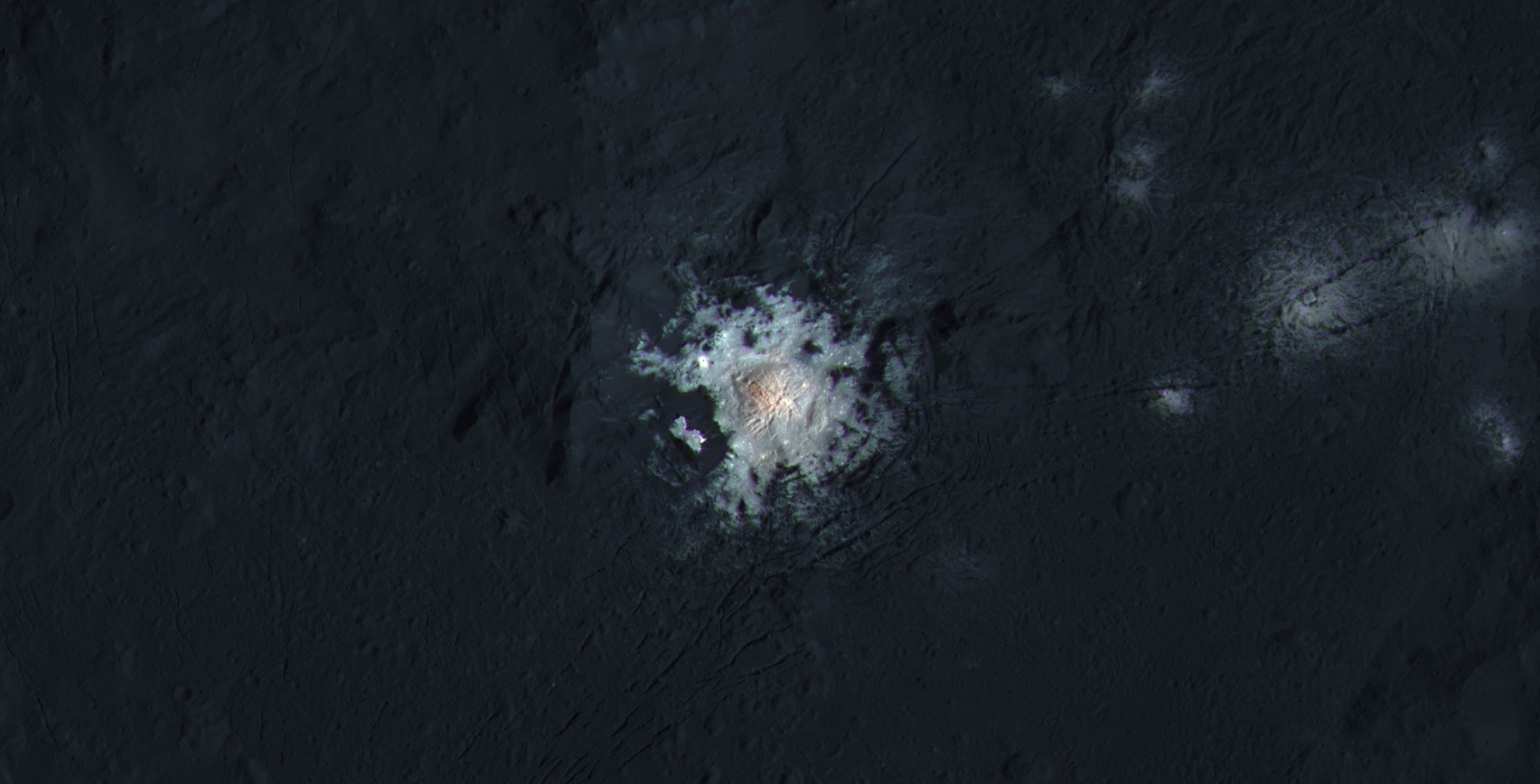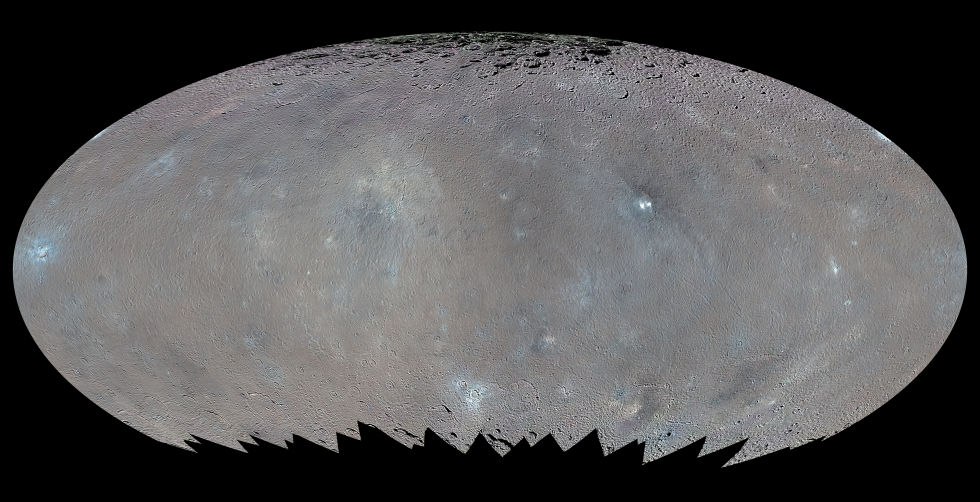Dawn probe sent a photo of the bright spots of Ceres in maximum quality

When you click the image will open in full size (photo: NASA)
For many years the high albedo of Ceres did not give rest to astronomers. Why the surface of this celestial body reflects so much light, it became clear only after the probe Dawn began to approach the planetoid. It turned out that all this is due to the bright spots, of which two of the brightest spots stand out are located in the same region - the Occator crater. The nature of these spots was unclear.
Until the probe reached the minimum distance from Ceres, the scientists could not understand what the spots were and why their albedo was so great. A variety of assumptions were made about the nature of these formations. So, some experts believed that it was water ice, others - that it was salts, chemical compounds that came to the surface. Now Dawn has sent a photo of the spots obtained from a distance of 385 km from the surface of the planetoid. And it is already clear that this is definitely not the palace of the crown prince of the entire Galaxy, and it looks like water ice is not (although there are still doubts).
NASA showed photos of the Occator crater with spots in it at the Lunar and Planetary Science Conference . The photos clearly show that the crater is covered with numerous cracks and kinks. This suggests the existence of some geological activity, although it is not yet clear what kind of activity it is. By the way, not so long ago, scientists saw a haze over these spots.
“Before Dawn began actively exploring Ceres last year, the Occator crater looked like a big bright area. Now, in the last photo, we see complex formations that give new riddles for studying, ”says one of the representatives of the Dawn team. As mentioned above, only a few of the brightest spots are located in the crater of Occator - but there are several dozens, if not hundreds, of them at Ceres.
Most likely, the spots are the exit to the surface of the planetoid magnesium sulfate, a substance with a high albedo. The Dawn probe tools provided the data for mapping the distribution of chemical compounds on the surface of Ceres. The data indicate that at the poles of Ceres, at a shallow depth below the surface, the ancient “reserves” of water ice may lie. Now there is an assumption that in the early stages of its evolution, Ceres was a warm world, and the ocean was splashing on its surface. Unfortunately, over time this world began to cool. And since the planetoid did not have its own source of heat (like in Europe, for example), the water was frozen. Salt on the surface may be just the "legacy" of the frozen ocean of water.
In this case, the celestial body is geologically active. In addition, the Occator crater is more than 90 million years old, but the spots on its surface are very bright. They are clearly less than 80 million years old, during which time they would definitely have darkened. Probably, somewhere under the surface of the planetoid, there are some processes that lead to the release of salts to the surface.


A general map of Ceres after processing.


And this is another mystery - a crater and a mountain with smooth and shiny slopes. A

map of the northern hemisphere of Ceres, obtained using data from gamma and neutron radiation sensors.
